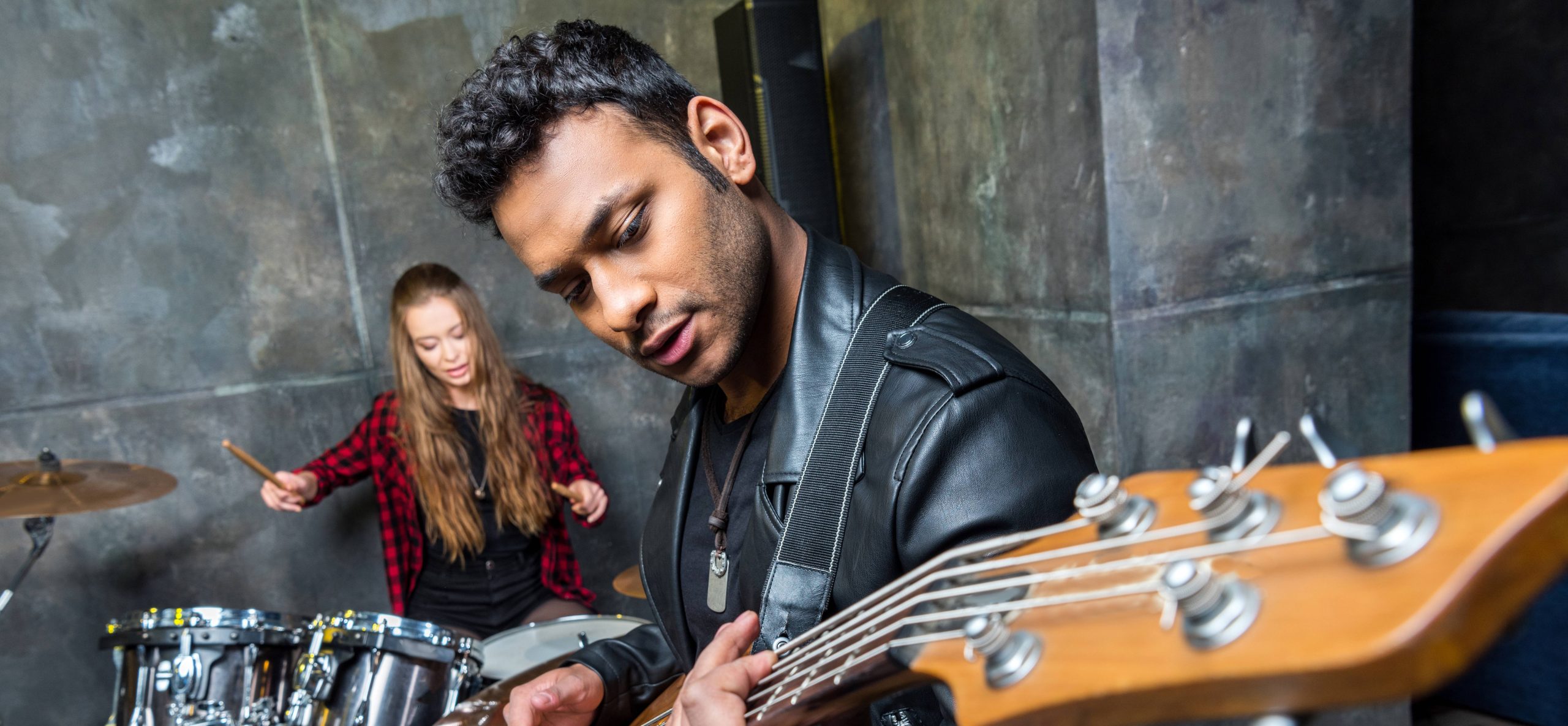When it comes to live performances, the music is undoubtedly crucial, but it’s the stage presence of the performer that truly captivates and leaves a lasting impression on the audience. This article delves into this vital aspect of live music, exploring how artists can enhance their performances and create unforgettable experiences for their audience.
Stage presence is much more than just a physical appearance on stage; it’s an amalgamation of confidence, charisma, and the ability to connect deeply with the audience. It’s the magnetic pull that draws the audience into the performance, making them feel every emotion and note. This intangible quality can transform a good performance into something extraordinary, leaving the audience mesmerized long after the last note has been played.
In this post, we will explore the various facets of stage presence, starting with understanding what it entails and its profound impact on both the performer and the audience. Building confidence is a critical element, as it sets the foundation for a strong stage presence. We will discuss strategies to overcome common obstacles such as stage fright and how to exude confidence, even when you may not feel it.
Engaging with the audience is another crucial component, and we will delve into techniques to create a connection that transcends the physical space between the stage and the crowd. This includes the use of body language, facial expressions, and eye contact, all of which play a significant role in drawing the audience into your performance.
Moreover, we will look at the visual aspects of performance, including attire, stage props, and visuals, and how they contribute to crafting a memorable show. The post will also cover the importance of movement and choreography, helping you strike the right balance between physical expression and musicality.
Whether you are a seasoned performer or just starting, this guide will provide valuable insights into developing a unique and powerful stage presence. By the end of this post, you’ll be equipped with practical tips and inspiration to enhance your live performances, ensuring that your stage presence is as impactful as your music.
Understanding Stage Presence
Understanding stage presence is fundamental to mastering it. At its core, stage presence is the ability of a performer to engage and captivate an audience through their performance. It’s a combination of charisma, expressiveness, and confidence that creates a magnetic attraction, compelling the audience to focus on and react to the performer. This quality goes beyond mere talent; it’s about how you communicate and connect with the audience, both through your music and your persona on stage.
The components of stage presence are multifaceted. It involves not just what you do on stage, but also how you do it. Body language plays a crucial role; the way you move, your facial expressions, and even your posture can convey confidence and passion, or alternatively, discomfort and disengagement. Similarly, your interaction with the audience, the energy you exude, and the emotion you infuse into your performance are all part of this complex equation. A strong stage presence makes the performance not just heard, but felt by the audience.
The psychological impact of stage presence can’t be understated. For the performer, a strong stage presence can boost confidence and lead to a more fulfilling performance experience. It creates a feedback loop; as the audience becomes more engaged, the performer feeds off their energy, further enhancing their presence and performance. For the audience, an artist with a compelling stage presence can transform a simple concert into an immersive experience. It creates a connection that transcends the boundaries of the stage, making the performance memorable and sometimes, even transformative.
Understanding that stage presence is both an art and a skill is crucial. It can be cultivated and honed over time with practice and mindfulness. Recognizing its importance is the first step in developing this critical aspect of live performance, setting the stage for a deeper exploration of how to effectively build and enhance your presence in front of an audience.
Building Confidence
Building confidence is a key element in developing a strong stage presence. Confidence on stage not only enhances performance but also deeply influences how the audience perceives and connects with the performer. However, achieving this level of confidence can be a journey, especially when dealing with the common issue of stage fright or performance anxiety.
One effective method to build confidence is through consistent practice and preparation. Knowing your material inside and out can significantly reduce anxiety and boost your confidence. This preparation goes beyond just knowing the music; it involves rehearsing the nuances of your performance, from movement to interaction with the audience. Familiarity breeds confidence, and the more you rehearse, the more comfortable you become with your material and your ability to deliver it effectively.
Another strategy is to start small and gradually increase the stakes. Begin by performing in front of a mirror, then progress to small, familiar audiences like friends or family, and gradually move to larger, unfamiliar crowds. This gradual exposure helps build confidence in stages, making the process less overwhelming.
It’s also important to adopt a positive mindset. Replace negative self-talk with affirmations and constructive criticism. Remember that mistakes are part of the learning process; they do not define your ability as a performer. Learning to embrace and learn from mistakes rather than fear them can significantly boost your confidence.
Visualizing success before a performance can also be a powerful tool. Mental rehearsals, where you visualize yourself performing confidently and successfully, can help prepare your mind for the actual performance. This technique is widely used by athletes and performers alike to build mental and emotional readiness.
Lastly, taking care of your physical and mental health plays a crucial role in building confidence. Regular exercise, a healthy diet, and adequate rest can improve your overall well-being, which in turn, reflects in your stage presence.
Building confidence is a personal and ongoing process. It requires patience, practice, and a positive mindset, but the payoff is a more commanding and engaging presence on stage, leading to more impactful and rewarding performances.
Engaging with Your Audience
Engaging with your audience is a pivotal aspect of crafting a memorable stage presence. The connection you establish with your audience can transform your performance from being just heard to being felt and remembered. This engagement goes beyond mere physical presence; it’s about creating an emotional and interactive experience for your audience.
Firstly, eye contact is a powerful tool for engagement. It can create a sense of intimacy and connection, making audience members feel seen and involved. However, it’s important to balance it; too much can be intimidating, while too little can seem disengaged. Aim to make eye contact with different sections of the audience throughout your performance, creating a sense of inclusivity.
Your body language also plays a crucial role. Open and inviting gestures can make the audience feel welcomed and connected. Conversely, closed-off body language might create a barrier. Utilize the space on the stage to move around if possible, which can add dynamism to your performance and help you connect with different parts of the audience.
Verbal interaction is equally important. Talking to your audience, whether it’s introducing your songs, sharing stories, or simply expressing your gratitude, can make your performance more personal and engaging. Humor, when appropriate, can also be a great way to connect.
Another aspect of audience engagement is reading the room. Be attuned to the audience’s energy and respond accordingly. If they seem energetic, mirror that with your performance. If they’re more subdued, perhaps a more intimate approach is needed. Being responsive and adaptable to the audience’s mood shows that you are not just performing for them but with them.
Lastly, involving the audience in your performance, like encouraging them to sing along or participate in some way, can be very effective. This not only breaks the fourth wall but also makes the performance a shared experience, creating a collective moment that is likely to be cherished.
Engaging with your audience requires mindfulness and adaptability. By using eye contact, body language, verbal communication, and responsiveness, you can create a powerful and memorable connection, making each performance uniquely impactful.
Visual Aspects of Performance
The visual aspects of a performance are just as crucial as the musical elements in establishing a memorable stage presence. How you present yourself visually can significantly enhance the audience’s experience and leave a lasting impression.
First and foremost, your attire and appearance play a major role in setting the tone for your performance. What you wear should align with your music and the image you want to convey. This doesn’t necessarily mean elaborate costumes or extravagant outfits; it could be as simple as a style that resonates with your genre or personal brand. The key is consistency and authenticity, ensuring that your visual presentation complements your music and stage persona.
Lighting and stage design also contribute significantly to the visual impact of a performance. Effective lighting can set the mood, highlight key moments, and add dynamism to your show. Even in venues with limited lighting options, being mindful of how you use the available light can make a difference. Similarly, thoughtful stage design, which can include props, backdrops, or simple set pieces, can enhance the thematic elements of your show and create a more immersive experience for the audience.
Utilizing visuals such as video projections or graphics can further elevate your performance. These elements can tell a story, convey emotions, or simply add an aesthetic dimension to your show. However, it’s important to ensure that these visuals complement rather than overshadow the musical performance.
Your movement on stage is a vital visual component. How you move and interact with your band members, your instruments, and the space around you can convey energy and emotion. Even in confined spaces, subtle movements or gestures can be powerful in expressing the essence of your songs.
The visual aspects of your performance are an extension of your artistry. They provide an opportunity to create a holistic experience that engages not just the ears but also the eyes, making your live shows not just concerts but memorable events. Balancing visual appeal with authenticity will make your performances stand out and leave a lasting impact on your audience.
Movement and Choreography
Incorporating movement and choreography into your performances can significantly enhance your stage presence, adding an element of visual storytelling that complements your music. Effective use of movement on stage can express the emotions and energy of your songs, creating a more dynamic and engaging experience for the audience.
The key to successful movement on stage is to ensure it feels natural and matches the mood of your music. It doesn’t necessarily mean elaborate dance routines – unless that fits your style – but rather, it’s about using movement to emphasize certain parts of your performance. This could be as simple as swaying to the rhythm, stepping forward during an emotional high point, or using hand gestures to emphasize a lyric. The goal is to add a physical expression to the music, making the performance more expressive and memorable.
If you’re comfortable with more structured choreography, it can be a powerful tool, especially in genres like pop or musical theatre. Choreographed routines can be used to tell a story, convey a message, or simply entertain. However, it’s important that any choreography feels in sync with the music and doesn’t detract from your vocal performance or musicianship.
Instruments themselves can also be part of your movement. The way you play your guitar, the dynamics of drumming, or the motion of bowing a violin can all be integral to your stage presence. Being mindful of how you interact with your instrument can add an extra layer of interest and engagement for your audience.
Practicing your movements or choreography as part of your rehearsal process is crucial. This practice ensures that your movements feel fluid and confident during the actual performance. It also helps you to be aware of how your movements work within the space of the stage and in conjunction with other band members.
Ultimately, the inclusion of movement and choreography in your performances should aim to create a more immersive and captivating experience. When done well, it bridges the gap between performer and audience, making your live shows not just a listening experience but a visual spectacle as well.
Developing a Unique Style
Developing a unique style is fundamental to establishing a memorable stage presence. It’s about crafting an on-stage persona that reflects your musical identity and resonates with your audience. This uniqueness sets you apart in the crowded music scene and makes your performances distinctly yours.
The journey to finding your unique style often begins with self-reflection. Consider what aspects of your personality and music you want to highlight on stage. Are you energetic and bold, or more introspective and subdued? Understanding your artistic identity will guide the development of your stage presence. It’s about amplifying your natural characteristics and interests rather than adopting an entirely new persona.
Your musical influences also play a role in shaping your style. Drawing inspiration from artists you admire can be a starting point. However, it’s important to blend these influences with your own ideas to create something that’s uniquely yours. Experimentation is key in this process. Try different approaches to your performance, from the way you interact with the audience to how you move and dress on stage. See what feels right and what resonates with your audience.
Authenticity is crucial in developing your style. An audience can tell when a performer is genuine versus when they’re putting on a facade. Your stage persona should be an extension of yourself, not a mask you put on. This authenticity fosters a deeper connection with your audience, as they can relate more to who you truly are.
Remember, developing a unique style is an evolving process. It grows and changes as you do as an artist. Be open to experimentation and change, and don’t be afraid to evolve your style over time. Stay true to yourself, and your stage presence will naturally reflect the uniqueness of your music and personality. This authenticity and distinctiveness are what will make your performances memorable and engaging, helping you build a lasting impression with your audience.
Vocal and Instrumental Dynamics
Vocal and instrumental dynamics play a significant role in enhancing stage presence, offering a powerful means to captivate and engage the audience. Dynamics refer to the variations in loudness and intensity in your performance, which can dramatically affect the emotional impact of your music.
For vocalists, mastering dynamics involves more than just volume control; it’s about using your voice to convey the full range of emotions in your songs. This can mean belting out a chorus with power and intensity or singing a verse with soft, nuanced tenderness. The key is to match the dynamic level of your singing with the mood and message of the song. This not only showcases your vocal versatility but also keeps the audience emotionally invested in your performance.
Similarly, for instrumentalists, dynamics involve varying the intensity and volume of your playing. It’s about knowing when to drive the song forward with vigorous, loud playing and when to pull back to create a more intimate, gentle sound. This dynamic variation not only adds interest and depth to your performance but also demonstrates your musicality and skill.
Effective use of dynamics also requires an understanding of the overall arrangement of your songs. Recognizing which sections of a song should be highlighted and where to create contrast can make your performance more impactful. For bands, this means working cohesively to ensure that the dynamics of individual instruments come together to complement the song as a whole.
Incorporating dynamics into your performance also involves a physical element. For vocalists, using gestures and body language to emphasize dynamic changes can enhance the expressiveness of the performance. For instrumentalists, physical movements can mirror the intensity of their playing, making the performance visually engaging as well as sonically captivating.
Utilizing vocal and instrumental dynamics effectively requires practice and a deep understanding of your music. By mastering these nuances, you can elevate your stage presence, turning your performance into a dynamic and emotive experience that resonates with the audience.
Learning from the Greats
Learning from the greats is an invaluable strategy for enhancing your stage presence. Many legendary performers have left indelible marks on the music industry, not just through their songs, but through their charismatic and compelling performances. Studying these artists can provide a wealth of inspiration and insight into how to captivate an audience.
Begin by identifying performers you admire and analyze their stage presence. Pay attention to how they command the stage, interact with the audience, and express themselves through their movements and expressions. Notice the nuances in their performance – the way they enter the stage, the dynamics of their performance, their interactions with band members, and how they exit. Each of these elements contributes to their overall stage presence.
It’s also beneficial to study a diverse range of artists across different genres and eras. This can broaden your perspective and inspire you to incorporate various elements into your own style. You might find inspiration in the theatricality of a rock icon, the soulful expressiveness of a jazz legend, or the energetic charisma of a pop star.
While learning from the greats, it’s important to adapt rather than imitate. The goal is not to copy another artist’s style, but to learn what makes their stage presence effective and how you can apply similar principles in a way that aligns with your unique identity as a performer.
Reflecting on the career trajectories of these artists can also be enlightening. Many great performers evolved their stage presence over time, adapting to different phases of their career and changes in their artistic direction. This evolution can teach you the importance of flexibility and growth in developing your stage presence.
Incorporating these learnings into your performances involves practice and experimentation. Try out different techniques during rehearsals, record yourself to get a better perspective, and be open to feedback. Over time, you can integrate these insights into your performances, enhancing your stage presence with a blend of learned techniques and personal flair.
Continuous Improvement
Continuous improvement is vital in honing your stage presence and keeping your performances fresh and engaging. No matter how experienced you are, there’s always room to refine and evolve your onstage persona. This pursuit of improvement not only helps in maintaining audience interest but also contributes to your growth as an artist.
One effective approach to continuous improvement is seeking and being open to feedback. Constructive criticism from fellow musicians, mentors, or even your audience can provide valuable insights into your performance. It can highlight areas that are working well and aspects that may need more attention. Sometimes, an outside perspective can offer ideas and observations you might not have considered yourself.
Recording your performances is another powerful tool for self-evaluation. Watching yourself perform can reveal a lot about your stage presence that you might not notice in the moment. It allows you to critically assess your body language, audience interaction, and overall performance energy. Use these recordings to identify both strengths to build upon and areas for improvement.
Experimenting with new techniques, styles, and ideas is also crucial for keeping your performances dynamic. Don’t be afraid to step out of your comfort zone and try something different, whether it’s a new way of engaging with the audience, a different approach to your movement on stage, or experimenting with your setlist. These experiments can bring a refreshing change and might even become a staple in your performances.
Additionally, staying updated with current trends in live performances can provide inspiration and new perspectives. Attend other artists’ concerts, watch live performance videos, and keep an eye on emerging trends in stage production and performance styles. This ongoing learning process can fuel your creativity and inspire new ways to enhance your stage presence.
Finally, remember that improvement is a continuous journey, not a destination. Embrace each performance as an opportunity to learn and grow. With dedication and a willingness to adapt and evolve, your stage presence can become a powerful tool in creating memorable and impactful live music experiences.
To Sum It Up
In conclusion, crafting a memorable stage presence is a multifaceted and ongoing endeavor that is crucial for the success and impact of live performers. It’s a blend of confidence, audience engagement, visual presentation, movement, unique style, dynamic vocal and instrumental expression, and continuous learning and improvement. Your stage presence is as much a part of your artistic expression as your music; it’s the bridge that connects you with your audience, creating an immersive and unforgettable experience.
Remember, developing a strong stage presence is a journey that involves experimentation, self-awareness, and adaptability. It’s about finding what works best for you and your music, and how you can most authentically connect with your audience. Drawing inspiration from legendary performers and continuously seeking feedback and new ways to grow are integral to this process.
Each performance is an opportunity to refine your stage presence and leave a lasting impression on your audience. Whether you’re just starting or have been performing for years, there’s always room to evolve and enhance the way you present yourself on stage. Embrace the uniqueness of your artistic identity and let it shine through in your performances.
Above all, enjoy the journey of crafting your stage presence. The energy, passion, and connection you bring to the stage are what will make your performances truly stand out and resonate with your audience. With dedication, creativity, and a willingness to learn and grow, your stage presence can become an indelible part of your artistic legacy.




